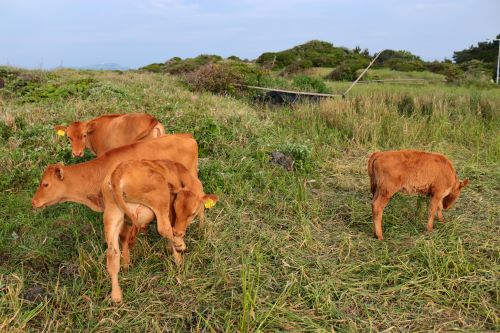From Rainbow Trout to Sauerkraut: exploring our new microbial discoveries
Posted on January 4, 2024 by Clare Baker
Each month, the Microbiology Society publishes the International Journal of Systematic and Evolutionary Microbiology, which details newly discovered species of bacteria, fungi and protists. Here are some of the new species that have been discovered and the places they've been found.
New year, new discoveries! 'New to Science' kicks off 2024 with an exciting dive into the world of microbes.
As the title suggests, the first microbial discoveries we’re going to explore in 2024 were isolated in from a rainbow trout (Oncorhynchus mykiss) farm. Pseudomonas aphyarum, Pseudomonas fontis, Pseudomonas idahonensis and Pseudomonas rubra were discovered during a large-scale bacterial culturing effort of biofilms in and around a rainbow trout facility in Idaho, USA. The four new species of Pseudomonas were found among 10 isolates which had pathogen-inhibiting activity. These new species may have potential for use as novel probiotics or sources of novel antimicrobial compounds, and we can’t wait to find out!
Shall we continue our microbes of 2024 with a classic? Our first microbe was isolated from some poo: cow faeces in Daejeon, Republic of Korea to be exact. Brevibacillus ruminantium is a Gram-stain-positive, rod-shaped, endospore-forming bacterial strain isolated from faeces of a Hanwoo, a native Korean cattle breed. It earns its name from the word ‘ruminants’, which refers to the cow from which it originated.

The story of our next novel species is definitely out of the ordinary for ‘New to Science’. Variovorax durovernensis is a novel strain isolated from a chronically infected prosthetic endovascular graft (used to treat an aortic aneurysm) explanted from a patient at Guy’s and St Tomas’ Hospital in London, UK. Members of the genus Variovorax have never for been isolated from humans, except for a single report of uncertain significance identifying rRNA gene sequences from cerebrospinal fluid from neurosurgical meningitis. The graft harbouring V. durovernensis belongs to a 55-year-old shepherd from Canterbury, inspiring the microbe's name: durovernensis, derived from Durovernum, the city's Latin name.
Our next new microbe is not only a new species but a new genus. You may be able to discern some of the characteristics or origins of the species from its name -Antiquaquibacter oligotrophicus. Its genus name, Antiquaquibacter refers to a rod from ancient water. And its species name, Oligotrophicus comes from the Greek oligos, meaning few, and trophikos, meaning nursing or feeding, and refers to the low nutrient content of the site. It may come as no surprise then, that A. oligotrophicus is described in the International Journal of Systematic and Evolutionary Microbiology as an oligotrophic bacterium, isolated from a groundwater sample from Sztaravoda spring, Hungary.
Finally, we come to Sauerkraut, a fermented cabbage dish consumed in Central and Eastern Europe. It’s also widely consumed in Russia, which is the location of a local market where a Gram-stain-positive, rod-shaped Lactiplantibacillus brownii was isolated from a sample of the pickled cabbage dish. Our new microbe joins the genus Lactiplantibacillus which have long played an important role in commercial fermentation processes in food, beverage and feed industries. Members of the genus are generally recognised as safe and even have some health-promoting effects, such as anti-oxidative, anti-inflammatory and anti-osteoporotic properties. Let’s hope L. brownii is proven to exhibit some of these useful properties in the future.

